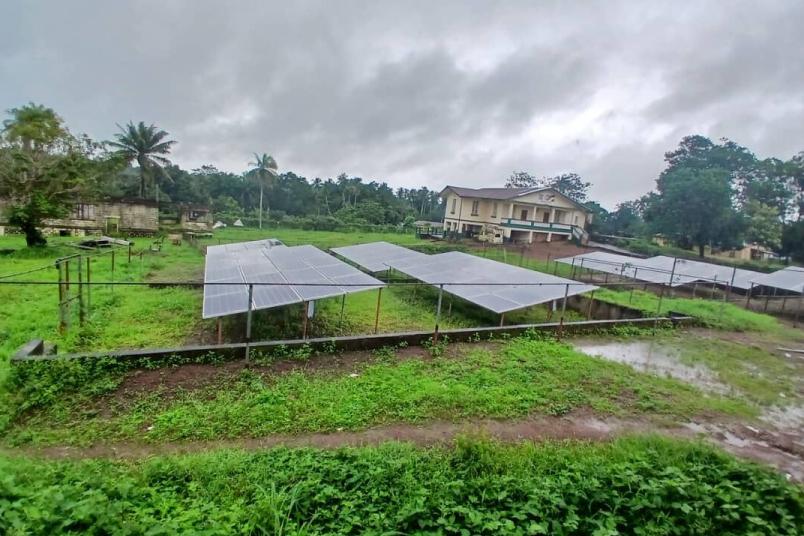
Community-based mini grids can supply entire villages with electricity.
Development research
“People Are Just Happier”
In rural communities affected by poverty, solar power strengthens the local economy and improves daily life, especially for women.
Every day, nearly two billion people worldwide rely on open flames fueled by wood, coal, animal dung, or kerosene to heat up their food for a warm meal. “This releases about one gigaton of CO2 per year,” says Dr. Elkhan Richard Sadik-Zada from Ruhr University Bochum. Can solar power alleviate this environmental issue? Sadik-Zada, his students, and his colleagues at the Institute of Development Research and Development Policy used the data they obtained on site in rural regions of Cambodia, Sierra Leone, Uganda, the Pamir Mountains in Central Asia, and former war zones in northern Syria to answer this very question. The conclusion: Solar power can do that and much more. Rubin, the scientific magazine of Ruhr University Bochum, reports on the findings.
Through international development cooperation, rural areas in developing countries are being equipped with solar systems, among other things, in order to provide access to electricity, particularly to remote villages affected by poverty or conflict. But how does this new power supply change the lives of people who live in the rural areas? To answer these questions, the researchers conducted personal interviews with residents in rural communities.
How power changes daily life
“The impact that electrification has had on the daily lives of the population is striking,” says Sadik-Zada, an economist at the Institute of Development Research and Development Policy and the Center for Environmental Management, Resources, and Energy. “Particularly important is its effect on existing agricultural systems, which are vital for livelihoods and food security “ Electricity makes it possible for the people to operate electric pumps and use groundwater to irrigate their fields. This in turn at least partially alleviates the negative impacts of climate change, such as extensive periods of drought.
The availability of electric lighting also lets shopkeepers keep their establishments open later into the evening. Hairstylists or small grocery stores can thus conduct more business and earn more income. “On average, we noticed that solar power increased household income in villages by 15 to 20 percent,” reports Sadik-Zada.
Improving equality
According to the study, women in particular benefit from electrification. This is because it is women who spend up to two hours every day gathering fuel for the hearth. It is also often women who are standing next to the smoking hearth at home, developing respiratory and eye problems. “Cooking with an electric stovetop eliminates this health risk, and there is more time for other activities,” says Sadik-Zada. “Women often use this spare time to make handicrafts for sale, learn practical skills such as weaving, embroidery, or soap-making, and start small businesses.” Also, with electric lighting, children can continue studying after dark and spend more time for their schoolwork.
Detailed report in Rubin